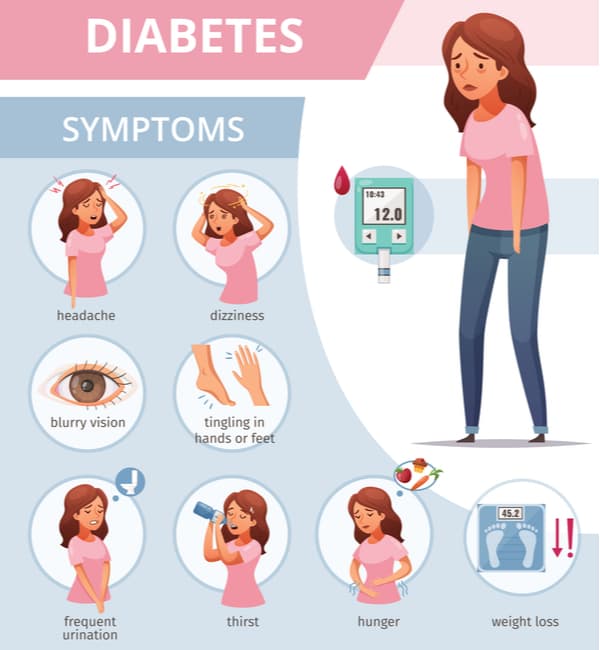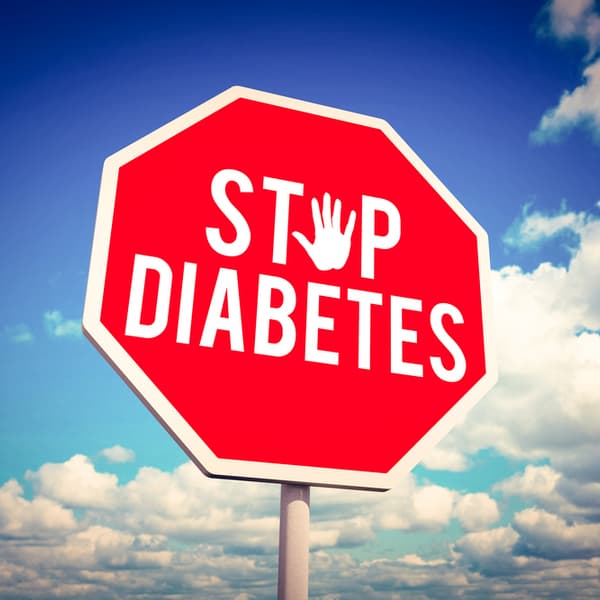Diabetes mellitus is a public health problem, causing a major impact on morbidity and mortality due to chronic complications related to the lack of timely interventions to identify risk factors for the development of target organ damage. DM is the leading cause of non-traumatic lower-limb amputation, usually preceded by ulceration of the patient’s foot. In addition, about half of first-time amputees will require additional amputations within three years, and half of the patients undergoing a major amputation will die within five years. Identifying at-risk patients is the first step in achieving this goal, followed by patient education.
Diabetes is a chronic disease that arises because the pancreas either does not synthesize the amount of insulin the human body needs, produces insulin of inferior quality, or is unable to use it effectively
What Is Insulin?

Insulin is a polypeptide hormone that is synthesized by the β-cells of the islets of Langerhans in the pancreas. In its active form, it consists of two different polypeptide chains:
- A – with 20 amino acids
- B – with 31 amino acids.
The two chains are linked together by two disulfide bridges. Insulin is synthesized as preproinsulin. This molecule consists of a single polypeptide chain, which undergoes several subsequent processes in various parts of the cell to produce active insulin.
Insulin is a hormone that regulates blood glucose levels (glycemia). Our cells require energy to carry out their processes. Our body obtains energy by the metabolism of glucose. We obtain glucose from food, which, through digestion, is converted into nutrients, including glucose.
Symptoms of Diabetes

The early symptoms of diabetes mellitus may be characterized by high blood glucose levels due to the body’s inability to produce or use the hormone insulin properly. Excess glucose is eliminated in the urine, leading to an increase in the amount of urine produced by the kidneys (polyuria) and, therefore, an increase in the frequency of urination. In turn, this will lead to an increased need to drink fluids, so the sensation of thirst will also increase (polydipsia).
The presence of abundant sugar in the urine will also favor the proliferation of bacteria in the urinary tract, so bladder or kidney infections will be more frequent. Skin or gum infections will also be common, and wounds or other infections will take longer than normal to heal. On the other hand, the lack of insulin or the resistance to this hormone developed by the tissues means that glucose cannot enter the cells, which are deprived of this source of energy. This causes people with diabetes to show signs of fatigue and to be hungrier than usual, despite having eaten. People with undiagnosed type 1 diabetes may even lose weight.
Symptoms of diabetes can vary in intensity in different people and according to the specific pathology. Type 1 diabetes usually produces symptoms quickly and clearly after the development of the autoimmune response to insulin-producing cells, so diagnosis is usually almost immediately after the onset of symptoms. On the other hand, type 2 diabetes is much more gradual in its manifestation, so that it may take several years after the onset of insulin resistance to develop symptoms that raise the alarm. In these cases of diabetes without clear symptoms, diagnosis may occur when a blood test is performed for other reasons or as part of a screening program among people with risk factors.
In brief:
- Persistent feeling of thirst
- Increased urine volume
- Tiredness
- Weight loss, despite eating more than usual (especially in type 1 diabetes)
- Increased appetite
- Itching, especially in the genital area
- Repeated infections of the skin and vagina; cystitis
Prevention and Risk Factors

It is currently not possible to prevent type 1 diabetes, despite many attempts. Type 2 diabetes is the most common and is preventable. Since the most important cause is obesity, all actions that have to do with obesity prevention (avoiding sedentary lifestyles, junk food, sugary drinks, etc.) will have a positive result as a healthy lifestyle reduces the chances of getting type 2 diabetes by 80 percent.
Once the disease has been diagnosed, microvascular and macrovascular complications must be prevented. Following the prescribed treatment, as well as dietary and physical activity recommendations, is essential to avoid complications such as cardiovascular, renal, retinopathy, or diabetic foot.
Treatment
Diabetes mellitus is associated with a significant increase in cardiovascular events. The therapeutic strategy for diabetes must be based on an understanding of its pathophysiology. Thus, insulin administration is essential in the treatment of type 1 diabetes mellitus, as there is a significant deficit in insulin secretion in these patients. However, the treatment of patients with type 2 diabetes is more complex because there is a deficit in both insulin secretion and insulin action. Therefore, the choice of treatment will depend on the stage of the disease and the individual characteristics of the patient.

